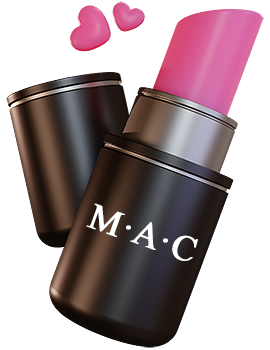You can define public opinion as the shared view of members of the wider society. It comprises three types of views:
1. Individuals;
2. Groups;
3. Elites.
This public opinion is then constructed by the media, who pull together the three types of view. This role is carried out by pundits in the media, who are the leading players in the elite group.
We can divide the public into three main streams.
First, we have the “attentive” stream that shows interest in all government policies and politics generally.
Second, we have the “specialists” who only pay attention to issues they have a particular interest in (such as medicine).
Third, The “no interest stream” those who pay little or no attention to issues.
Public opinion will combine all three streams of community members, ranging from those with no interest and knowledge in a topic to those with expert knowledge. All of the opinions are given the same weight in calculating public opinion. This brings us to Public Opinion Polls. These polls try to recreate a model of society as accurately as possible.
When questioning the model (sample group) on issues, the pollsters will try to extrapolate from the sample group, what the view of society as a whole will be. How accurate this will be will depend on the size of the model, how accurately they have reproduced the overall society when building the model, and the way the questions are posed.
There is a danger that when considering their opinion on a topic that members of the third-stream (those who pay little or no attention to issues) will follow the results of a previous poll or follow the stated views of members of the elite stream.
A Real-Life Example:
Let us use an example from real life. The United Kingdom had a referendum (a measure of public opinion) on whether to leave the EU (European Union). If we look at our three streams we had the attentive stream that follow politics and government, the specialists’ stream who only follow issues that interest them and the no-interest stream.
The Attentive Stream.
This group who understood the economic consequences of leaving the EU and realized it would be a disaster mostly voted to “remain.”
The Specialist Stream.
Before the referendum, the number of people that understood and were single-issue campaigners on the EU was a tiny minority. It simply was not a significant issue.
The No-Interest Stream.
This was by far the most significant stream. Very few people had any understanding of the EU.
What happened in the run-up to the referendum was that the Attentive Stream mostly campaigned to “Remain.” Except for those members of the Attentive Stream who were also members of the Elite and worked for media outlets that were owned by prominent “Leave” supporters. This Elite used their media exposure to promote the views of their paymasters. This exposure swayed the members of the No-Interest stream.
The referendum result was very close, just the most narrow of majority for the Leave voters. Following the referendum, many leave voters were interviewed, and it became evident that the Not-Interested Group had no understanding of the EU and the results of withdrawal. They had voted on issues that they had been fed by the Elite, which in reality had nothing to do with the EU.
Conclusion.
Here we have an example of a case where public opinion was shaped by a small Elite faction that had access to media exposure and had used this to feed information to the No-Interest group and manipulated the results of the referendum. This is the power of public opinion. This is not an isolated scenario.
The Elite Group.
Politicians, polling companies, policy specialists, activists, and journalists have become the leaders of public opinion. They shape and interpret public opinion.
The Nature & Origins of Mass Opinion (New York: Cambridge, 1992) by John Zaller stated that the average person has no time or desire to try and keep up with all the different public debates in the country. Consequently, they rely on members of the Elite to understand and disseminate abbreviated versions for them to understand.
This manipulation is usually achieved through the media. But the press has its agendas and paymasters, often giant corporations that spend heavily on advertising.
Political scientist V.O.Key said, “The voice of the people is but an echo.”

So in our exploration of What is Public Opinion?
Concept and Basics of Formation, we seem to be suggesting that small groups manipulate public opinion with the resources to do so. Going back to an academic study of this point, we are told by cognitive researchers that we are programmed, by our biology, to follow the crowd, to follow public opinion. When we agree with the consensus (public opinion), we have shots of Dopamine, which makes us feel good.
When our opinion diverges from the consensus, then we get reduced levels of dopamine. So if we agree with what the media is telling us is the public opinion, then we will feel better.
An illustration of this is demonstrated by an experiment that was carried out:
They planted four people in a doctor’s surgery just before it opened. These people had been told that they should stand up when the nurse called the name of the next patient, and then sit down when the patient went in.
Regular patients came in and sat down, and then the first patient was called. The four individuals stood up, and the other patient looked very uncomfortable and looked around, wondering what was happening.
The second patient who was called in resulted some of the regular patients copying the four. By the third patient to be called in, everyone was standing up. Now they had no idea why they were doing this.
It clearly had no point, but because everyone was doing it, they copied. One by one, the four individuals went into the doctor until, ultimately, there were only genuine patients in the waiting room, and they were still standing up. As new patients came in, they adopted the routine as well. The experiment carried on for the whole length of the doctor’s session.
Now I am sure that everyone knew that it was achieving nothing by standing up. It made no sense, but people felt better (Dopamine increases) because they were part of the consensus.
What is Public Opinion? Concept and Basics of Formulation the answer is that public opinion is often a construct created by members of the elite (the four individuals in the last story) who promote an action or belief and influence others to adopt it. This may seem slightly cynical, but try applying that idea to every situation and look for the elite. You will find it holds true on most occasions.
































